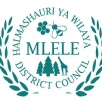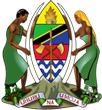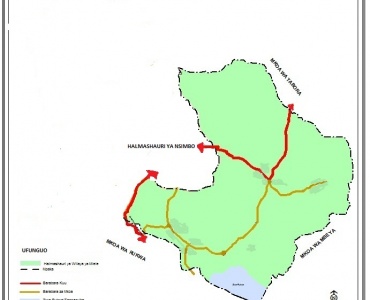- Mwanzo
- Kuhusu Sisi
-
Utawala
-
Idara
- Utawala na Rasilimali watu
-
Maji
- Historia
- Dhima na Dira
- Muundo wa Taasisi
- Ukaribisho
- Jaribu
- what we do
- Huduma ya Maji
- Huduma za Afya
- Elimu Msingi
- Huduma
- Mwenyekiti wa Halmashauri
- Mkurugenzi Mtendaji
- Utawala na Rasilimali watu
- /TEHAMA-na-Takwimu
- Idara ya Afya na Ustawi wa Jamii
- Mipango takwimu na Ufuatiaji
- Ardhi na Maliasili
- Kitengo cha Fedha na Uhasibu
- Ukaguzi wa Ndani
- Sheria
- Kilimo Umwagiliaji na Ushirika
- Mifugo na Uvuvi
- Maendeleo ya Jamii
- Idara
- Vitengo
- Ujenzi
- Maji
- Ugavi na Manunuzi
- Usafishaji na Mazingira
- Uchaguzi
- Tasaf III
- Mainstreaming Sustainable Forest Managment in Woodland of Western Tanzania Project
- Mwenge waUhuru
- UKIMWI/ VVU
- Risk Oficer Cordinator
- Miradi inayoendelea
- Zabuni
- Kazi za Idara Utumishi
- Muundo wa Halmashauri
- Miradi Lengwa
- Kitengo cha nyuki
- Mwenge
- Sera ya Faragha
- Kanusho
- Machapisho
- Sheria
- MTF
- Fomu
- Orodha ya Madiwani
- Fedha, Uongozi na Mipango
- UKIMWI
- Maji
- Mipango Miji na Mazingira
- Uchumi, Afya na Elimu
- Maadili
- Ratiba
- Vikao vya waheshimiwa
- Kuonana na Mwenyekiti
- Madiwani
- Kanausho
- Huduma ya Maji
- Huduma ya Afya
- Huduma ya Kilimo
- Huduma ya Elimu
- Huduma ya Ufugaji
- Huduma za Uvuvi
- Huduma za Sheria
- Huduma za kiutumishi
- Vivutio vya Utalii
- Kilimo
- Ufugaji
- Itakayo tekelezwa
- Inayoendelea
- Iliyo Tekelezwa
- muongozo
- Sheria Ndogo
- Mkataba wa Huduma kwa Mteja
- Mpango Mkakati
- Taarifa
- Fomu Mbalimbali
- Taarifa kwa Umma
- Video za shughuli zetu
- Maktaba ya Picha
- Magazeti
- Hotuba
- ORODHA YA WAJUMBE WA KAMATI MBALIMBALI ZA KUDUMUKWA MWAKA WA FEDHA 2019/2020
- KARENDA YA VIKAO VYA KISHERIA VYA HALMASHAURI YA WILAYA YA MLELE KWA MWAKA WA FEDHA 2019/2020
- Maendeleo ya Jamii
- Ujenzi
- Elimu Sekondari
- Ardhi na Maliasili
- Fedha na Biashara
- Kilimo Umwagiliaji na Ushirika
- Mipango Takwimu na Ufuatiliaji
- Mifugo na Uvuvi
- Afya
- Viengo
- Muundo wa Taasisi
-
Idara
- Fursa za Uwekezaji
- Huduma Zetu
- Madiwani
- Miradi
- Machapisho
- Kiini cha Habari
- TASAF











